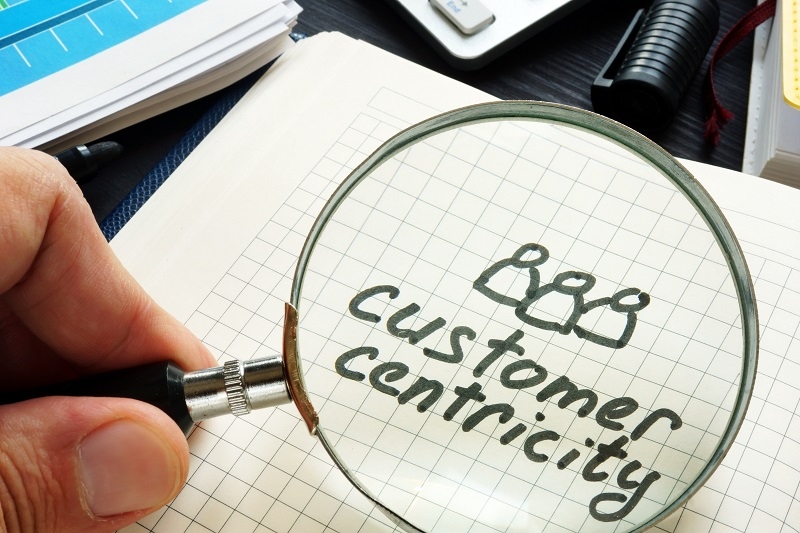Build a Customer-Centric Business Model for Lasting Success

In our hyper-competitive market, creating a high-quality product is no longer sufficient. Successful companies fundamentally change their operations to be centered on the people they serve. This is an accurate model of customer centricity, a fundamental strategy, not simply a business creator mindset, to uncover the customer’s intrinsic value that they build with customers. Embracing a customer-centric business strategy is not a "nice to have" but an absolute necessity for sustainable growth. Customer centricity goes beyond a simple customer-centric marketing campaign; it serves as the underpinning of the entire organization, and it permeates into the very "DNA" of the firm. This article will ultimately guide understanding, creating value, and leveraging this customer-centric business strategy.
What is a customer-centric business model?
Essentially, a customer-centric business model is a type of organizational structure in which all departments—including product development, marketing, HR, and finance—base their decision-making on an understanding of the customer—what they want, what they need, and what their pain points are. The customer's success is the core measure of the company's success; it represents a whole system rather than a single program or initiative.
Companies organized in a customer-centric way are not only asking, "How can we sell more?" They ask, "What is a more effective way to solve our customers' problems?" Moving to a customer-centric business model requires an enormous cultural shift and a dedication to listening, adapting, and consistently delivering value for the customer across channels and touchpoints. This is the highest form of authentic customer centricity.
Customer-Centric vs. Business-Centric: A Fundamental Divide
Realizing the meaning of a customer-centric model is more insightful when it is examined alongside its counterpart—a business-centric model. The differences come in both a philosophical and a practical dimension.
- Business-Centric Model: The main drivers for decision-making are internal, firm-focused goals (i.e., the firm's sales goals for a quarter, operational efficiency, profit maximization, etc.). The focus is on the transaction, marketing messaging speaks to features or benefits of the product, and the success metric is about short-term sales. Business-centricity also fosters silos within firms and disconnects the firm from what the customer truly wants (the firm becomes separate from the customer).
- Customer-Centric Model: The main drivers for decision-making are centered on the long-term value and satisfaction of the customer. The focus is on the relationship, and the success metrics are around Customer Lifetime Value (CLV), Net Promoter Score (NPS), and retention rates. The whole organization or company is aligned around creating a seamless, positive experience that will deepen loyalty and contribute to customer advocacy.
Ultimately, shifting from a customer-centric to a business-centric mindset means shifting from short-term gains to long-term, sustainable profitability generated by loyal customers who function as your brand evangelists.
The Pillars of a Successful Customer-Centric Business Strategy
Establishing a customer-centric business takes time. It requires focused and continuous activity organized around several key pillars.
1. Deep Understanding and Empathy for the Customer
You cannot be customer-centric without first knowing and understanding your customers. Simply knowing the basic demographics is insufficient. Real understanding comes from deep empathy generated through the following:
- Data analytics: Using data analytics from your CRM, website behavior, or purchase history to see behavior patterns.
- Active listening: Continuously solicit customer feedback by contacting them through surveys, interviews, or user testing.
- Customer personas: Developing specific personas of your best customers, including goals, challenges, and motivators.
- Journey mapping: Mapping each customer interaction with your brand, pre-purchase, purchase, and post-purchase, to find pain points and pleasures.
2. Company-Wide Cultural Alignment
Employees, not only those in customer care, must adopt a customer-centric mentality. This has to begin at the top.
- Leadership Buy-In: Executives must champion the customer-centric approach. They must model and link the behavior to the organization's mission.
- Employee Empowerment: Employees on the front line must be granted authority to solve customer issues without getting approval from multiple levels. Employees who are happy and feel empowered create satisfied customers.
- Shared Success Metrics: Departments need to break down silos by aligning incentives and success metrics around the customer, such as reducing churn and enhancing satisfaction, rather than purely department-focused goals.
3. Customer-Centric Design of Products and Services
Your products and services should reflect your customers' needs. This includes:
- Co-creation: Involve customers in developing the product or service through beta testing and feedback loops.
- Iterative improvement: Periodically refine products or services based on usage and feedback in the real world and mindfully adopt an agile practice.
- Anticipatory service: Design services that solve customer problems before they become problems.
4. Integrated and Authentic Customer-Centric Marketing
Customer-centric marketing is about communication that serves the customer, not just the brand. It’s a shift from interruption to interaction.
- Personalization: Using customer data to deliver relevant messages, offers, and content at the right time.
- Value-Driven Content: Creating content that educates, entertains, or solves problems for your audience, rather than just promoting your product.
- Transparency and Authenticity: Building trust by being honest about your offerings and admitting mistakes when they happen.

The Tangible Benefits of Embracing Customer Centricity
So, why should you make all this effort? The benefits of developing a customer-centric company are incredible and drive profitability.
- Increased Customer Loyalty and Retention: Customers who feel understood and valued are significantly less likely to switch to a competitor. Keeping an existing customer is far less expensive than getting a new one.
- Increase Customer Lifetime Value (CLV): Loyal customers will buy more frequently and are more likely to purchase additional products and services.
- Advocacy and Brand Reputation: Happy customers are your best marketing. A renewable approach to driving organic word-of-mouth referral that has incredible ROI.
- More Effective Innovation: When you develop a more meaningful relationship with your customers, you can create insights that lead to more effective new products and services that customers want to purchase and use.
- Increased Employee Satisfaction: Employees who feel empowered by the organization to impact customers positively are typically more satisfied and engaged.
Implementing Your Own Customer-Centric Approach: A Practical Guide
Transforming into a customer-centric organization is a journey. Here are some actionable steps to get started.
- Conduct an Honest Audit: Assess your current state. Where are you on the spectrum of customer-centric vs. business-centric? Gather feedback from both customers and employees.
- Define What Customer Centricity Means for You: Establish clear, company-wide principles. What does "putting the customer first" look like in daily operations for each department?
- Invest in the Right Technology: Implement a CRM system to consolidate customer data and gain a unified view of each customer.
- Reward the Right Behaviors: Change incentive structures to reward customer retention, satisfaction, and feedback collection, not just sales volume.
- Start Small and Iterate: You don't need to overhaul everything completely. Pick one customer journey to optimize, learn from the process, and scale what works.
The Future Is Customer-Centric
Using a customer-centered business model is not just a fad but a vital necessity for today's success. Reflecting a strategic focus on developing long-term relationships, instead of merely closing deals, is the foundation for business success today. When you take the time to really understand your customers, engage your entire organization in knowing how to help them succeed, and put it all into action within your organization sincerely and authentically, you create a strong foundation for your business that will sustain changing market conditions and enable you to achieve sustainable, profitable growth. So you know, the time to begin is now.
You may check out: Business Communication Trends 2025 Every Company Should Know.
Conclusion
Ultimately, a customer-centric business model is a powerful engine for long-term success. It moves beyond short-term transactions to build genuine loyalty and advocacy. By embedding customer centricity into your culture and strategy, you create a profitable and truly indispensable business for the people it serves. This is the definitive path to enduring relevance in an ever-changing world.
This content was created by AI

